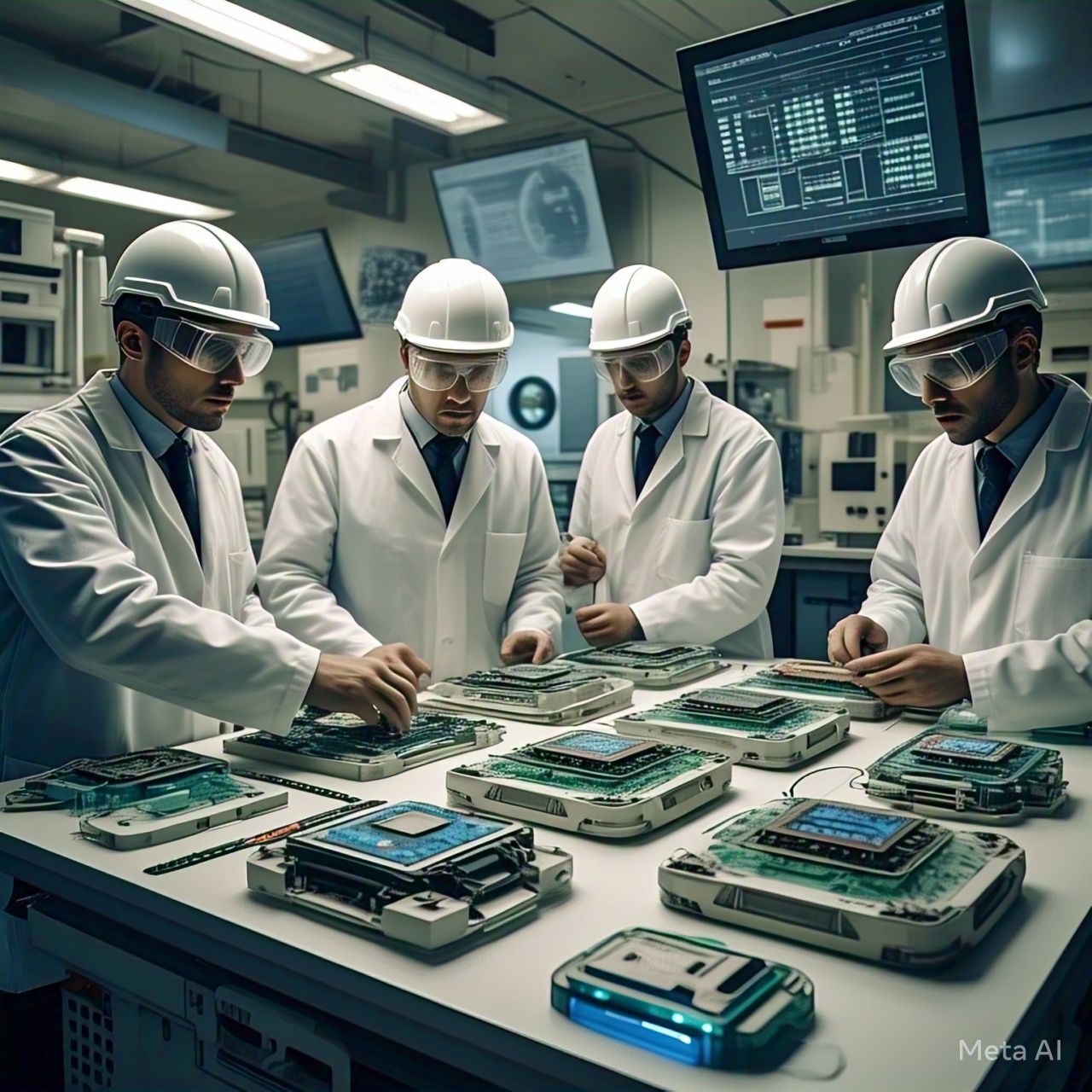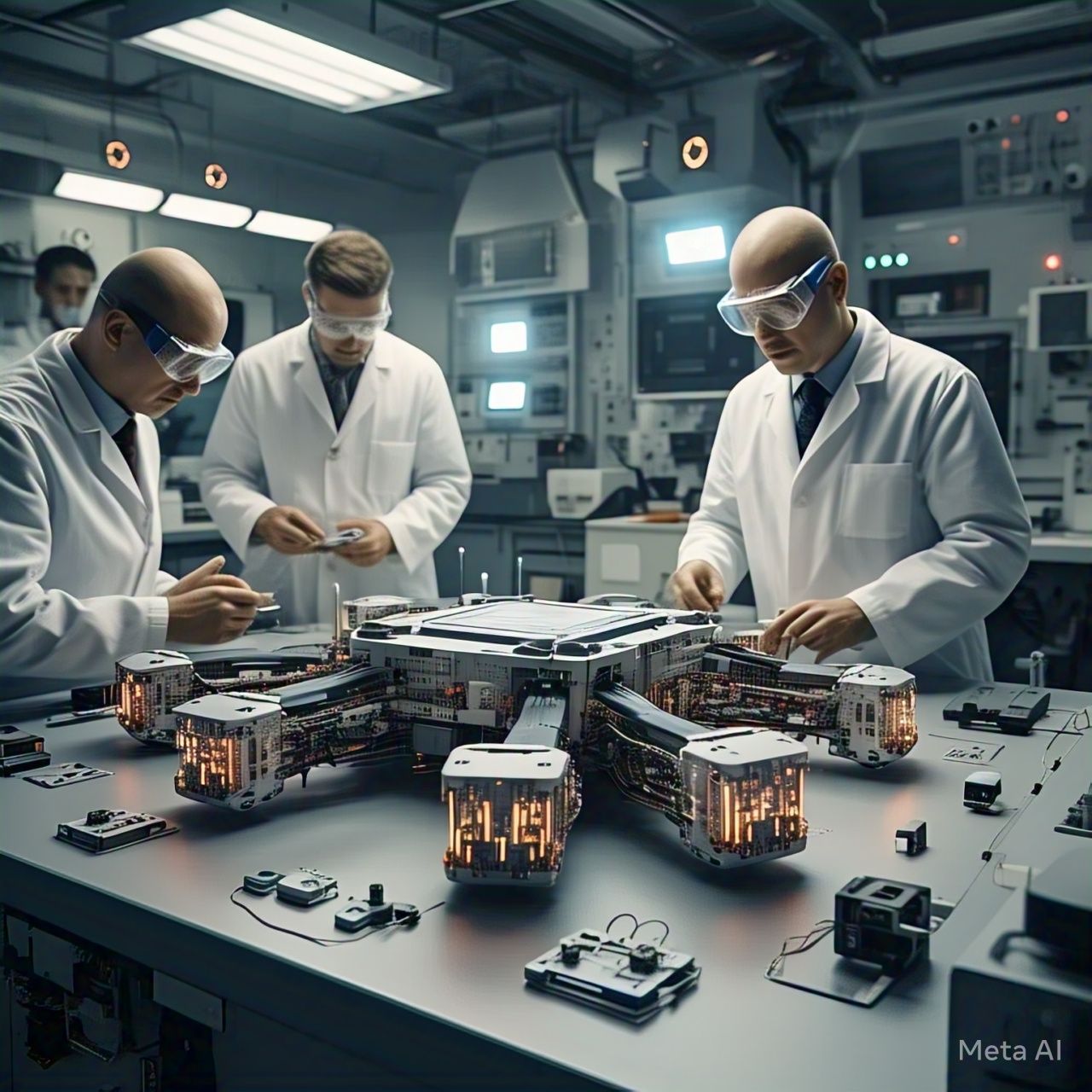Table of Contents
- Introduction
- The Role of AI in the Tech Industry
- Superconductor Chips: A Game-Changer for AI
- Big Tech Investments in Superconductor AI Chips
- Challenges in Superconductor Chip Development
- Potential Impact on AI and Computing
- Comparing Superconductor Chips with Traditional AI Chips
- Future Predictions for AI and Superconductors
- FAQs
- Conclusion
- References
1. Introduction
The AI revolution is in full swing, with advancements in deep learning, neural networks, and large-scale machine learning models. However, one major hurdle remains: computational efficiency. Traditional semiconductor-based processors, including GPUs and TPUs, are struggling to keep up with AI’s growing demands. This has led to a surge in research and investment into superconductor chips, which promise unprecedented speed and energy efficiency.
In this article, we explore how Big Tech is investing in superconductor AI chips, their potential to revolutionize AI, and what challenges lie ahead.
2. The Role of AI in the Tech Industry
Artificial Intelligence has rapidly evolved across various industries, from autonomous driving and healthcare diagnostics to financial forecasting and robotics. The key driving force behind this evolution is computational power, and companies are constantly searching for more efficient AI hardware.
Traditional computing hardware faces three key bottlenecks:
- Heat Dissipation: AI chips consume enormous power, leading to excess heat.
- Latency Issues: Processing large AI models in real time requires faster hardware.
- Energy Consumption: GPUs and TPUs require vast amounts of electricity.
This is where superconductor chips enter the scene.
3. Superconductor Chips: A Game-Changer for AI
Superconductor chips use zero-resistance materials, allowing electricity to flow without energy loss. This technology offers several advantages:
| Feature | Superconductor Chips | Traditional AI Chips (GPUs, TPUs) |
|---|---|---|
| Energy Efficiency | Near-zero energy loss | High power consumption |
| Processing Speed | Potentially 100x faster | Slower due to resistive losses |
| Heat Dissipation | Minimal heat generation | High heat output |
| Scalability | Future-proofed for large AI models | Limited scalability |
Companies like Google, IBM, and Intel are racing to bring this technology to market.
4. Big Tech Investments in Superconductor AI Chips
Google’s Quantum AI & Superconducting Initiatives
Google has been at the forefront of quantum computing, investing heavily in superconductor-based processors. Their Quantum AI division is working on superconducting materials that could potentially enhance AI efficiency.
IBM’s Superconductor Roadmap
IBM is integrating superconductors with AI research. Their IBM Quantum roadmap highlights efforts to develop hybrid AI chips leveraging superconducting qubits.
Intel’s Advanced Research in AI Hardware
Intel has invested in neuromorphic computing and superconductor chip research, aiming to create AI processors with unparalleled efficiency.
Other Players Investing in Superconductors
- NVIDIA – Exploring superconductor integration for next-gen AI chips.
- Microsoft – Researching superconductor materials for cloud computing AI workloads.
- Tesla – Potential applications for self-driving AI systems.
5. Challenges in Superconductor Chip Development
While superconductor AI chips hold great promise, several challenges must be overcome:
1. Cooling Requirements
Superconductor chips require extremely low temperatures (near absolute zero) to function properly.
2. Manufacturing Costs
Superconductor materials are expensive and difficult to manufacture at scale.
3. Integration with Existing AI Models
Current AI architectures are built for semiconductor-based chips, meaning a complete redesign may be needed.
6. Potential Impact on AI and Computing
If successfully implemented, superconductor AI chips could revolutionize several industries:
- AI Model Training: Faster, more efficient training for deep learning models.
- Real-Time Processing: Instantaneous data processing for applications like self-driving cars.
- Lower Carbon Footprint: Reduced energy consumption compared to traditional AI chips.
7. Comparing Superconductor Chips with Traditional AI Chips
| Feature | Superconductor Chips | Traditional AI Chips |
| Power Efficiency | Uses significantly less power | High energy consumption |
| Processing Speed | Faster due to zero resistance | Limited by electrical resistance |
| Scalability | Can handle larger AI workloads | Bottlenecked by heat and power needs |
8. Future Predictions for AI and Superconductors
1. AI Models Will Become More Efficient
Superconductor AI chips will make neural networks more efficient, reducing computational costs.
2. Cloud Computing Will Transform
Big Tech companies will leverage superconductor chips to build ultra-efficient AI cloud platforms.
3. AI Chip Market Will Evolve
Traditional GPU/TPU dominance may decline, paving the way for superconductor-based AI processors.
9. FAQs
Q1: What makes superconductor chips different from traditional AI chips?
Superconductor chips use zero-resistance materials, making them faster and more energy-efficient than traditional AI chips.
Q2: Why are Big Tech companies investing in superconductor AI chips?
Big Tech firms see superconductors as the future of AI processing, offering lower energy costs and higher performance.
Q3: What challenges do superconductor AI chips face?
They require extremely low temperatures to function, making manufacturing and cooling difficult.
Q4: When will superconductor AI chips be widely available?
Experts predict early commercial adoption within the next 5–10 years.
Q5: How will superconductor AI chips impact industries?
They will improve machine learning, cloud computing, and AI-driven automation, making AI more accessible and efficient.
10. Conclusion
The rise of superconductor AI chips marks a new era in AI computing. While challenges remain, Big Tech’s investments signal that these chips could become the future standard for AI processing. With higher efficiency, speed, and lower energy consumption, superconductors could redefine AI hardware in the coming decade.




